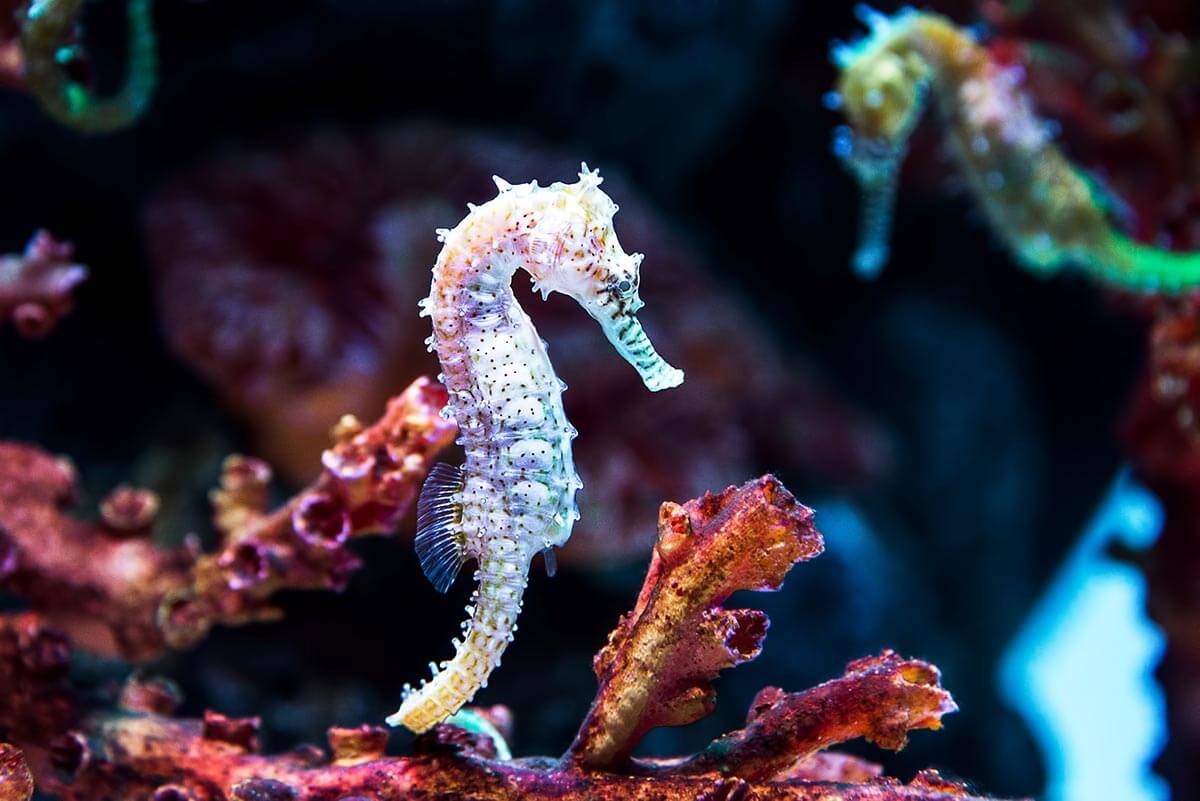Seahorses, with their delicate and otherworldly appearance, have fascinated marine enthusiasts and casual observers alike for generations. These unique creatures, known for their intricate courtship dances and intricate body structure, make for captivating inhabitants of aquariums. Seahorse aquariums offer a mesmerizing glimpse into the mysterious world of the ocean, allowing us to appreciate these mesmerizing creatures up close. In this article, we will explore the allure of seahorse aquariums, how to set up and maintain one, and the ethical considerations associated with keeping seahorses in captivity.
The Fascination with Seahorses

Seahorses, belonging to the Syngnathidae family, are a group of fish that stand out from their underwater counterparts. Their upright posture, elongated snouts, and prehensile tails are features that make them truly unique. Seahorses are also remarkable for their monogamous tendencies, with many species engaging in intricate courtship rituals that involve dancing and even “holding hands” with their tails.
What captivates most people about seahorses is their whimsical and ethereal appearance. Their bodies are covered in bony plates rather than scales, which gives them a surreal, almost alien-like quality. Additionally, seahorses come in various colors and patterns, from bright oranges to mottled browns, which make them visually stunning. All of these factors contribute to the allure of seahorses and their popularity in the aquarium hobby.
Setting Up a Seahorse Aquarium

Creating a seahorse aquarium is a rewarding endeavor, but it requires careful planning and attention to detail. Here are the key steps to set up your own seahorse aquarium:
1. Tank Selection: Choose an aquarium with the appropriate size and shape. Seahorses thrive in taller, narrower tanks that mimic the natural vertical habitat they prefer.
2. Filtration: Install a high-quality filtration system, as seahorses are sensitive to water quality. A well-established biological filtration system, such as a sump or a refugium, is essential for maintaining stable water parameters.
3. Water Parameters: Seahorses are sensitive to changes in water temperature, salinity, and pH. It’s crucial to maintain stable parameters. Keep the water temperature between 72-78°F (22-26°C), salinity around 1.020-1.024, and pH levels close to 8.0.
4. Live Rock and Substrate: Provide live rock for seahorses to anchor on, and choose a suitable substrate for the tank’s bottom. Sand or crushed coral are popular choices as they mimic the seahorses’ natural habitat.
5. Lighting: Seahorses do not require intense lighting, as they are not photosynthetic. A dim, blue LED lighting system can create an attractive ambiance without causing stress to the seahorses.
6. Tank Mates: Select peaceful tank mates that won’t outcompete seahorses for food. Gobies, pipefish, and certain small, peaceful species of reef fish can make suitable companions.
Feeding Seahorses
Seahorses are unique in their feeding habits; they use their tubular snouts to vacuum up tiny aquatic organisms, including copepods and amphipods. In captivity, they can be fed frozen Mysis shrimp, brine shrimp, and other small, nutritious foods. It’s essential to provide multiple small feedings throughout the day to ensure they receive enough sustenance. A variety of food sources should be offered to mimic their diverse diet in the wild.
Ethical Considerations
While seahorse aquariums can be a captivating and educational experience, it’s crucial to address the ethical considerations associated with keeping these delicate creatures in captivity. Seahorses are often harvested from the wild to meet the demand for the aquarium trade. Overexploitation of seahorse populations can have devastating consequences on their natural habitats.
To mitigate these issues, consider the following ethical practices when setting up a seahorse aquarium:
1. Captive-Bred Seahorses: Whenever possible, source captive-bred seahorses rather than wild-caught specimens. Captive breeding helps reduce the demand for wild populations and conserves their natural habitats.
2. Sustainable Practices: If you decide to keep wild-caught seahorses, ensure they are sourced from sustainable and ethical suppliers who follow responsible collection and shipping practices.
3. Education and Conservation: Support organizations and initiatives focused on seahorse conservation and habitat preservation. By educating yourself and others, you can contribute to the protection of these captivating creatures in the wild.
Conclusion
Seahorse aquariums offer a magical window into the captivating world of these unique marine animals. Their mesmerizing appearance and enchanting behavior make them a wonderful addition to any marine enthusiast’s collection. However, it’s essential to approach seahorse aquariums with care and responsibility, taking ethical considerations into account and prioritizing the conservation of these delicate creatures and their natural habitats. With proper care and attention, a seahorse aquarium can be a rewarding and educational experience that allows us to appreciate the wonders of the ocean in the comfort of our own homes.






